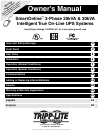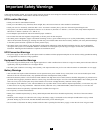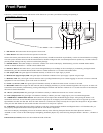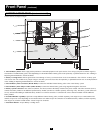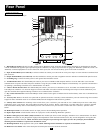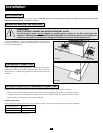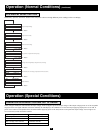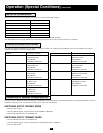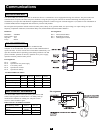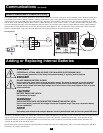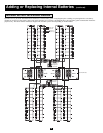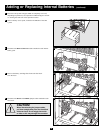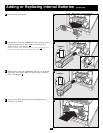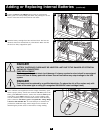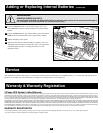
2
Important Safety Warnings
SAVE THESE INSTRUCTIONS. This manual contains important instructions and warnings that should be followed during the installation and maintenance
of all Tripp Lite SmartOnline 3-Phase 20kVA and 30kVA UPS Systems.
UPS Location Warnings
• Install your UPS in a controlled environment.
• Install your UPS indoors, away from heat, direct sunlight, dust, and excess moisture or other conductive contaminants.
• Install your UPS in a structurally sound area that is level. Your UPS is extremely heavy; take care when moving and lifting the unit.
• Only operate your UPS at indoor temperatures between 32° F and 104° F (between 0° C and 40° C). For best results, keep indoor temperatures
between 62° F and 84° F (between 17° C and 29° C).
• Leave adequate space around all sides of the UPS for proper ventilation.
• Do not install the UPS near magnetic storage media, as this may result in data corruption.
• The UPS System is designed to support a maximum load rating of one (1) power module and up to two (2) fully-loaded battery modules. Failure to
observe this maximum load rating (by stacking more than one power module and/or more than two battery modules) will cause permanent damage
to the UPS System and create a potential for serious personal injury.
• The UPS System's caster wheels are only designed for slight position adjustments within the final installation area; they are not designed for
moving the UPS System over considerable distances. The wheels are not designed to provide long-term support for the UPS system after final
installation. Mounting bracket installation is required. See Installation section.
UPS Connection Warnings
• The power supply for this unit must be three phase rated in accordance with the equipment nameplate. It also must be suitably grounded according
to all applicable local electrical wiring regulations.
Equipment Connection Warnings
• Do not use Tripp Lite UPS Systems in life support applications in which a malfunction or failure of a Tripp Lite UPS System could cause failure or
significantly alter the performance of a life support device.
• The UPS system contains its own energy source (battery). The output terminals may be live even when the UPS is not connected to an AC supply.
Battery Warnings
• Your UPS does not require routine maintenance. Do not open the UPS's power module for any reason; there are no user-serviceable parts inside.
Because of the risk of electrical shock, only qualified electricians should open the battery module.
• Because the batteries present a risk of electrical shock and burn from high short-circuit current, batteries should be changed only by trained service
personnel observing proper precautions. Remove watches, rings, and other metal objects. Use tools with insulated handles. Wear rubber gloves and
boots. Do not lay tools or metal parts on top of the batteries. Do not short or bridge the battery terminals with any object.
• Do not dispose of the batteries in a fire. The UPS batteries are recyclable. Refer to local codes for disposal requirements, or in the USA only, refer
to these sources for recycling information: 1-800-SAV-LEAD (1-800-728-5323), 1-800-8-BATTERY (1-800-8-228-8379), or www.rbrc.com.
• Internal batteries must be replaced by equivalent batteries available from Tripp Lite.
• Do not operate your UPS without batteries.
• Battery fuses should be replaced only by factory authorized personnel. Blown fuses should be replaced only with fuses of the same number
and type.
• Potentially lethal voltages exist within this unit as long as the battery supply is connected. Service and repair should be done only by trained
personnel. During any service work, the UPS should be turned off or put into manual bypass.
• Do not connect or disconnect the battery modules while the UPS is operating from the battery supply or when the unit is not in bypass mode.



